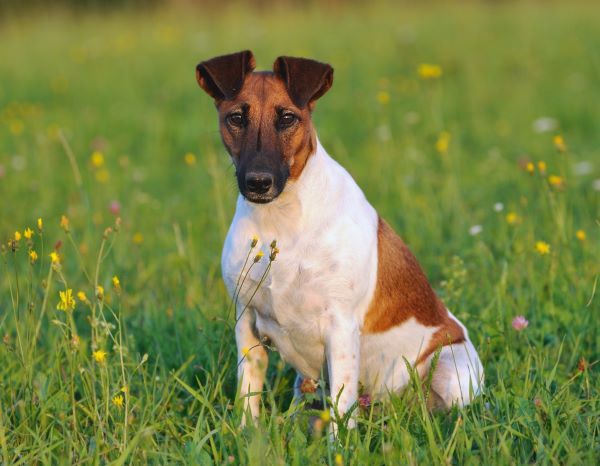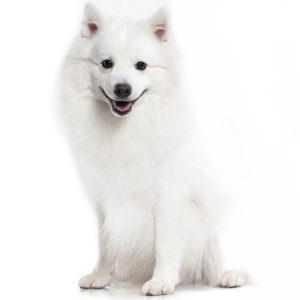Fox Terrier


| Recommended for | Active families, singles, or couples who enjoy outdoor activities and have the time to provide consistent training |
| Breed Classification | Terrier group |
| Other names | Wire Fox Terrier, Smooth Fox Terrier |
| Lifespan | 12-15 years |
| Size | Small |
| Temperament | Alert, active, intelligent |
| Intelligence | High; they are quick learners with a natural curiosity |
| Tendency to bark | Moderate to high; they are alert and vocal, often barking to warn of strangers or when excited |
| Maintenance Level | Moderate grooming needs due to their wiry coats |
| Health Risk | This breed has an around average probability of having health issues in its lifetime, hence it is one of the more affordable breeds to insure. |
Insuring a Fox Terrier?
Get our award-winning Nose-to-Tail Cover with up to $30k annual benefit limit, up to 90% of eligible vet bills back, and no sub-limits.
Get a quick quote
Is this breed right for you?
Try our breed selector quiz to find out your best matching breed!
Insuring a Fox Terrier?
Get our award-winning Nose-to-Tail Cover with up to $30k annual benefit limit, up to 90% of eligible vet bills back, and no sub-limits.
Get a quick quote
Breed history of Fox Terriers
The exact origins of the Fox Terrier is unknown; however, the breed is thought to have come about from crosses of the Old English Terrier, smooth coated Black and Tan terriers of England, Bull Terriers, Greyhounds and Beagles.
The breed can be traced back to the mid 1800’s when both smooth and broken coated types were interbred. Over time, devotees of both coat types bred like-to-like and developed the Wire and Smooth Fox Terrier types as we know them today. In England, Wire and Smooth Fox Terriers have been recognized as separate breeds, with different registries and breed standards, since the late 19th century, while the American Kennel Club did not recognize them as distinct breeds until 1985.
Fox Terriers became a popular dog to own in the late 18th century England when fox hunting became a popular pastime. They were used by hunters with foxhounds to locate foxes when they went to ground by barking and so pinpointing the position of the fox for the huntsman.
The first smooth haired Fox Terrier to arrive in Australia was brought to Sydney from England in 1868, followed by the first wire haired Fox Terrier in 1876. By 1886, a number of Fox Terriers had found their way to Australia and were exhibited in Centennial Park that year. Interestingly, from 1931 to 1938 Fox Terrier winners were very popular at Sydney Royal Easter Show events, with one particular Fox Terrier winning two years in a row, 1933 and 1934.
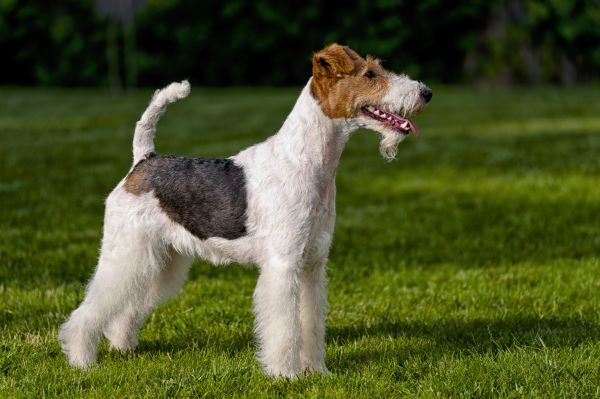
Physical description of Fox Terriers
The Fox Terrier is a small, compact, and athletic dog with an alert posture and a well-proportioned, muscular build that showcases their agility and strength. Their small, V-shaped ears fold forward, and their expressive, dark eyes give them a bright, intelligent appearance. They have a slightly tapered muzzle and a strong jaw, contributing to their bold and confident demeanour.
The breed comes in two varieties: the Smooth Fox Terrier and the Wire Fox Terrier (pictured). The Smooth variety has a short, sleek coat that lies close to the body, while the Wire variety features a dense, wiry coat that requires occasional hand-stripping to maintain its texture. Both coat types are predominantly white, with distinctive black, tan, or brindle markings that enhance their striking appearance.
| Weight range | Female: 6–8 kg, Male: 7–9 kg |
| Height range | Female: 33–36 cm, Male: 36–39 cm |
| Colours | Predominantly white with black, tan, or brindle markings |
| Coat length | Short for smooth coat; medium for wire coat |

Fox Terrier personality and temperament
Fox Terriers are spirited and outgoing dogs with lively personalities and fearless nature. They thrive in households where they are actively engaged in fun activities, whether it’s a play session in the garden, a brisk walk, or interactive games. Their playful and affectionate temperament makes them excellent companions for owners who enjoy spending time with an energetic and engaging companion.
Close interaction with their families is important for Fox Terriers, as they bond strongly with their owners and love being involved in household events. They love to get themselves in harmless trouble because they have a cheeky personality. Their alert nature and keen senses make them excellent watchdogs, always ready to sound the alarm; this also means that they bark more than usual at basically anything unfamiliar that moves.
Highly intelligent and alert, Fox Terriers are quick to learn, easy to train and excel in activities that challenge their minds, such as agility or obedience training. While their intelligence makes them perceptive to their owner’s emotions and commands, their independent streak can lead to moments of stubbornness. Consistent training and positive reinforcement are essential to help them focus and develop good habits.
Fox Terriers adapt well to a variety of living environments, from city apartments to rural homes, as long as they receive plenty of exercise and stimulation. They are moderately independent and can entertain themselves for short periods, but they thrive best when they have regular interaction and activities to channel their boundless energy. This combination of intelligence, sociability, and adaptability makes Fox Terriers a wonderful choice for families and individuals looking for a loyal and lively companion.
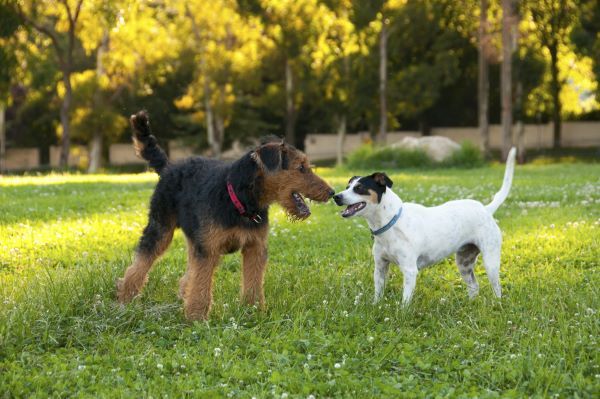
Fox Terriers with kids and other pets
Fox Terriers are lively and playful dogs that generally make excellent companions for families with children. Children and this breed tend to get along extremely well. Fox Terriers think of themselves as children so they have a strong desire to play fun games with kids. Their boundless energy and enthusiasm often match the playful nature of kids, making them a great addition to active households.
Fox Terriers are affectionate and loyal but may sometimes be a bit boisterous, so supervision is recommended during playtime with younger children to ensure interactions remain safe and gentle. Proper training and teaching children how to handle dogs respectfully will help build a strong bond between them and their Fox Terrier. Be sure to remind children not to tease or grab the dog’s food and toys; high-pitched screaming, running, and food snatching can trigger the breed’s hunting instinct and can result in biting.
When it comes to other pets, Fox Terriers are generally sociable but require early socialisation to ensure they get along well with other animals. With other dogs, they are typically friendly but can occasionally display territorial behaviour, which consistent training can help manage. They can have a strong bond with other dogs and even cats if they are introduced to each other at a young age. However, a mature Fox Terrier can see new cats and dogs as a threat when they reach an older age. Rodent-like animals can appear as prey to this breed, so keep them far away from each other.
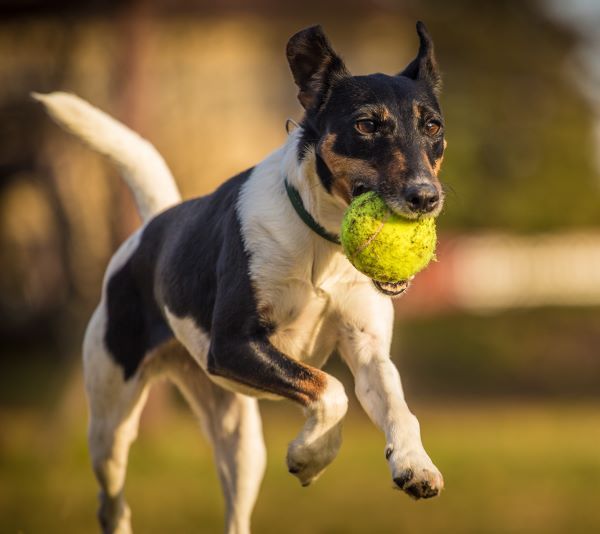
Fox Terrier training and exercise
Fox Terriers are energetic and intelligent dogs that thrive on regular physical activity and mental stimulation. Their lively nature requires daily exercise, such as brisk walks, active play sessions, or agility training, to keep them happy and healthy. Without enough physical and mental engagement, Fox Terriers may become bored, leading to undesirable behaviours such as digging or excessive barking.
Although they are highly energetic, their exercise requirements are moderate as long as activities are structured and engaging. Be sure to take them on walks to new places because they love exploring new places. Additionally, puzzle toys and interactive games are great ways to challenge their minds and channel their energy positively.
Fox Terriers are quick learners and excel in obedience and agility training, but their independent streak means consistent, patient training is essential. Positive reinforcement works best to keep them motivated, and early socialisation is crucial for developing their confidence around new people, pets, and places.
| Energy level | High |
| Exercise requirements | Moderate |

Fox Terrier feeding and nutrition
Keeping your Fox Terrier healthy and full of energy starts with a well-balanced diet that meets their specific needs. As active dogs, Fox Terriers will thrive on high-quality food with the right balance of protein, fats, and carbohydrates to support their daily activities and maintain their lean, muscular build. Their small size and high energy levels mean they benefit from nutrient-dense meals that are designed for their age, size, and lifestyle.
A Fox Terrier’s nutritional needs will evolve over time. Puppies require food rich in nutrients to support their rapid growth and boundless energy. Adults benefit from a balanced diet to sustain their active lifestyle, while senior Fox Terriers may need lower-calorie options with added support for joint health and digestion. Portion control is vital throughout all life stages to prevent overfeeding and maintain an ideal weight.
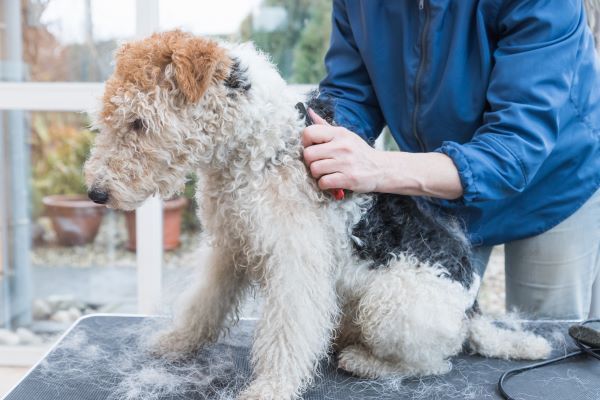
Fox Terrier care and grooming
Fox Terriers have a low-maintenance coat that comes in two distinct types: smooth and wiry. Smooth Fox Terriers have short, sleek coats that require weekly brushing to keep them clean and shiny, while Wire Fox Terriers have a dense, coarse coat that needs more attention, including occasional hand-stripping to maintain its texture. Both varieties shed moderately, so regular grooming helps to minimise loose hair around the home.
While Fox Terriers do not require elaborate trimming or clipping, regular grooming sessions ensure they look and feel their best. Their nails should be trimmed every few weeks to prevent overgrowth and discomfort, and their teeth need regular brushing to maintain good dental health.Bathing should be done only as necessary, using a gentle dog shampoo to avoid skin irritation. Checking and cleaning their ears regularly is also important, especially for active dogs prone to dirt and debris from outdoor adventures.
Health issues for Fox Terriers
- Deafness can occur in Fox Terriers, either as a congenital condition or as they age. This hereditary or acquired condition can lead to difficulty responding to commands or environmental sounds. Early testing and training adaptations, such as using visual cues or hand signals, can help ensure affected dogs live fulfilling lives.
- Legg-Calvé-Perthes disease affects the hip joint in some Fox Terriers, leading to pain, limping, and reduced mobility. This condition occurs due to the degeneration of the femoral head, often seen in small, active breeds. Early signs include difficulty walking and reluctance to play. Treatment may involve rest, physical therapy, or surgery in severe cases. Regular vet check-ups are essential for early detection and management.
- Luxating Patella is a common knee issue in Fox Terriers, where the kneecap shifts out of place. Symptoms include skipping steps, intermittent lameness, or difficulty running. While mild cases can be managed with exercise and weight control, severe cases often require surgical intervention. Routine monitoring and maintaining an appropriate weight can help reduce the risk.
- Skin Allergies are relatively common in Fox Terriers, causing itchiness, redness, or irritation. These allergies may result from environmental factors, food sensitivities, or grooming products. Using hypoallergenic shampoos, monitoring their diet, and regular vet consultations can help identify and minimise triggers.
- Dental Issues are prevalent in smaller breeds like Fox Terriers, often leading to tartar buildup, gum disease, or tooth loss. Regular brushing, dental chews, and professional cleanings are essential to maintaining good oral health and preventing complications.
Not all conditions are covered by Pet Insurance. For details of Bow Wow Meow Pet Insurance cover, refer to the Product Disclosure Statement.
What do Fox Terrier owners claim for the most?
- Mass Lesion
- Dermatitis
- Otitis Externa
- Pruritis
- Uveitis
Thinking about insuring a Fox Terrier
Thinking about insuring a Fox Terrier
Learn moreThinking about insuring a Fox Terrier
Learn moreFree engraved pet ID tag on sign up3
Customer Satisfaction
21 day cooling off
Easy to use Pet Portal

GapOnly® in vet claims
MORE INFORMATION
Fox Terrier Club of Victoria Inc.: http://www.foxterrierclubofvictoria.com/
The Fox Terrier Club of NSW: https://foxterriersnsw.tripod.com/
The Fox Terrier Club UK: https://www.thefoxterrierclub.co.uk/home

